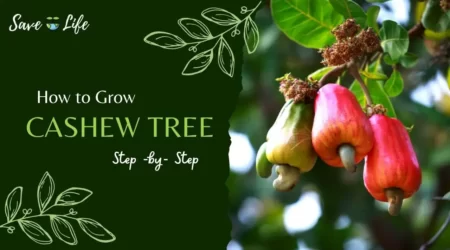Shami Plant: How to Grow, How to Care and Benefits of Shami Tree
Save Earth Life2023-04-22T16:21:30+05:30Did you know Shami plant is one of the wonderful trees of India?
Save Earth Life has taken an initiative to aware people of the benefits of planting trees to save the life of Earth.
Today, in this blog we are going to explain to you how to plant Shami and what are the benefits of planting this tree in your area.

| Names of Shami Tree | Khejri in Rajasthan, Chhonkara in Uttar Pradesh, Jammi in Telangana |
|---|---|
| Height | 3–5 m (9.8–16.4 ft) |
| Biological Name | Prosopis cineraria |
| Plant family | Fabaceae |
| Grown in the region | Afghanistan, Bahrain, Iran, India, Oman, Pakistan, Saudi Arabia, the United Arab Emirates, and Yemen |
| Temperature to grow | tolerates extreme temperatures ranging from 40–45 degrees C in summer to less than 10 degrees C in winter |
| Flowering season | March- June |
| Fruiting season | August – February |
| Popular as | The State Tree of Rajasthan |
Table of Contents
ToggleAbout Shami Plant
One of the most prevalent tree species is Shami (Prosopis cineraria), which is found in Afghanistan, Iran, Pakistan, and India’s dry regions of Rajasthan, Delhi, Gujarat, Punjab, Madhya Pradesh, and Uttar Pradesh. The plant can withstand high temperatures ranging from 40 to 45 C in the summer to less than 10 C in the winter.
It is also resistant to frost and drought. It can thrive where there is 100–600 mm of rainfall per year. The tree can withstand the hottest winds, and the driest season and stay alive where other plants cannot survive.
The Shami plant can grow in a variety of soil types, although it loves alluvial soil, which is made up of different sand and clay compositions. Although it can handle some salinity in the soil still a high salinity can cause it to dry out. In sandy soils, it is an excellent stabilizing agent and an efficient soil binder.

How to identify Shami Plant?
The Shami plant is most commonly found in India, Pakistan, Nepal, and Bangladesh. Shami is renowned for its gorgeous bark, lovely purple blossoms, and medicinal use. Worldwide, Shami has 60 different varieties of trees.
It might be possible that you have one of the varieties of Shami plants in your garden but you weren’t aware of the real and fake Shami. All the varieties are from the same family and provide the same features when compared to one another. It is easy to identify the Shami plant.

- Focusing first on the leaves, the Shami plant has alternate bipinnate leaves.
- Secondly, the Shami plant has small perky thorns present all over the branches of the Shami plant.
- Thirdly, the color of the flower of the Shami plant is yellow but the color of the plant we usually have in our homes is purple.
- These different features show that the fake Shami is much more famous than the real Shami.
The historical origin of the Shami Plant
In 1730, in a village named ‘Khejarli’ in Rajasthan (close to jodhpur), occurred a violent conflict among the kind between the village and the people of the village. Maharaja Abhay Singh, the king of the village ordered to cut down the Shami tree to make room for his new palace in the village.
A woman from the village named Amrita Devi, and her three young daughters sacrificed their lives just to protect the trees. Later, 363 people were killed while attempting to save the trees. This effect came to be known as the “Chipko Moment” in the 1970s as the result of this sacrifice memory.
How to Grow Shami Plant?
The Shami plant can be planted in two ways. Either through seeds or cutting (air layering). Remember some points before planting the Shami plant in your house.
PTO (Points to Remember)
- The temperature where the plantation is done. It should range between 9 to 46 degree Celsius.
- The plant requires 200-800 cm of rainfall per year.
- Consider using deep sandy loam soil for better and quicker growth.
- For germination the plant requires about 20 degrees Celsius.
Through Seeds:
- Visit your nearest nursery shop and buy some seeds of the Shami plant you need to plant.
- Take a flower pot of about 10 to 12 inches and make sure it has a hole at the bottom of the pot.
- Make a good mixture of good soils and sand so that your plant grows well. Take 2 mixtures of garden soil and 1 mixture of compost according to your pot size.

- Half fill the pot with the soil mixture and put the seeds inside the pot after removing the upper hardcover of the seed.
- Put a small amount of water in the pot and keep it moist for 3 days at least.
- Keep the pot in direct sunlight for germination.
Through Cutting (Air Layering):
- Find a healthy plant and use a sharp knife to cut from the new growth of the old plant (especially) the axial part of the plant.
- Soak some moss in water, dry them and prepare a ball out of it just by pressing it gently.
- Tie the moss with some natural manure, aloe vera gel, and honey with the help of small plastic which will help in faster rooting of the plant.

- It can take up to 4 – 6 weeks approximately for the roots to grow.
- Remove the plastic and graft the plant along with the moss in the pot. Remember the pot size. After planting, moisten the soil with some water and keep it in sunlight for germination.
According to vastu shastra in which direction to grow the shami plant?
Vastu Shastra is the text that is written on the Indian system of Architecture. These books explain the fundamental of design, layout, measurements, groundwork, space configuration, and geometry. People prefer to construct and design their homes according to the books of Vastu shastra. The reason behind this is to bring peace and harmony to people’s life and home.
According to Vastu Shastra, two trees help lessen the effects of Shani or Saturn which are Shami and The Peepal Tree. It is believed that worshipping these two trees will lessen Shani’s impact. One should grow Shami trees near his home to prevent Shani’s bad impacts.
In addition, the Shami plant’s leaves and petals can be utilized to counteract Shani’s unfavorable effects. For this purpose, the Shami should be planted in the right direction to grow. The direction to plant the Shami tree is listed below:
- The Shami plant must be planted in the west direction of your garden to reduce the effect of Shani.
- If you don’t have a garden or you live in a constricted area, you should plant the tree in the East direction to give the plant a sufficient amount of sunlight for 4-5 hours only.
- If you are planting trees in your home’s courtyard or small compound, remember to plant the trees in such a way that when you walk out of your house, they should lie on the right-hand side direction to bring goodwill and luck as you go out.
How to take care of the Shami plant?
Water: while in the germination phase, the Shami plant requires a lot of water but once it is mature enough, the plant does not require much water. Keep checking the plant, and water only if the upper layer of soil dries.
Sunlight: The Shami plant needs a lot of sunlight during the germination phase as well as when the plants mature. The plant can require 6 to 7 hours of sunlight.
Soil: The soil must contain compost to let the plant absorb nutrients from the soil and grow in any condition.
Temperature: The Shami plant can grow in temperatures ranging from 10 to 45. It can tolerate dry, humid climates along with moist climates too.
What are the Benefits of the Shami plant?
From the root to the pod, every component of the tree has a purpose. The whole tree is very significant in terms of medicinal use, food value, and worship purpose.
1. Medicinal Importance of Shami Plant
Ayurveda and other traditional medical systems have been used for a very long time to treat a wide range of illnesses. Many plants, trees, herbs, and shrubs are used for making a wide range of medicines. Scientists are still researching different medicinal use of different plants. In particular, a different part of the Shami plant is used to extract material and make medicines.
Especially, the tree’s bark extract is utilized to alleviate the symptoms of snake and scorpion bites. The tree covers everything from easing skin conditions, treating pimples, dark circles, and reducing miscarriages, and it also facilitates simple deliveries. It is not overstated to suggest that the Shami plant is a crucial species in India.
The Shami plant is also used in Ayurveda to treat mental disorders, respiratory tract infections, herpes, loose motions, and so on. The leaves of the Shami plant are used to kill parasites in the human intestine. The dried powdered bark of the plant is used to treat toothache and different gum-related problems. It also helps in healing the sore throat.
2. Food Value of Shami Plant
The Shami plant is a nitrogen-fixing tree that improves soil fertility. When crops such as rice, wheat, and other whole grains are sown beneath and around the Shami plant, it supports them. The Shami plant serves as a powerful wind barrier and shield for plants when it is planted at the edge of agricultural land or around the land to reduce the speed of wind entering the field and protect the crops from damage.
When it sheds its foliage, it also offers the soil a rich source of bio-matter or organic manure. With total lopping, leaving only the center leading stem, a fully-grown tree is predicted to generate roughly 60 kg of green foliage.
The green, unripe pods (basically the elongated seed vessel) are referred to as “sangria” or “sangar” in the Rajasthan area. The Shami plant’s dried green beans are kept in storage and used in cooking all year long. It’s one of the components of the well-known panchkuta (ker-sangri), a regional Marwari dish meal made with five different vegetables of different plants.
The mature dried pods have a pulp that is quite pleasant and edible. Local kids particularly enjoy eating them. They serve as cattle fodder and are consumed during the winters.
Earlier before independence, even the Shami bark, which has an astringent bitter flavor, was allegedly consumed. The tree gum harvested in May and June is palatable and nutritious, providing good health.
3. Economic importance of the Shami Plant
- The Shami plant is known as the "kalpavriksha of the desert" since all aspects of it are beneficial.
- The tree is also called Rajasthan’s “State tree” because of its significance.
- It is sometimes referred to as the "wonder tree" and the "lord of the desert."
The Shami plant is the longest, most widespread agroforestry species because of the many applications and services it provides. The tree is a top-feed plant that offers nourishing, very delicious dry and green fodder that camels, cattle, sheep, and goats readily browse. The leaves are highly nutritious and are known locally as “long” in the Rajasthan region.
Blackbuck, chinkara, nilgai, and hare are just a few of the herbivorous wild species that like the Shami plant as a source of food. Bees build their hives on trees in addition to collecting flower nectar for food. On the Shami tree, numerous species of ants and beetles can be found.
Religious Importance of Shami plant
During Janmashtami:
Krishna Janmashtami is a Hindu festival that is celebrated to mark the birth of Lord Krishna (eight Avtar of Vishnu). On this festival, the small stem or twigs of the Shami plant are worshiped in households of India. In Rajasthan, it is specially used to represent the lord, Krishna. The people of Rajasthan worship and honors the tree as God as it is the major tree that can survive the hot temperature of Rajasthan.
During Dussehra:
Dussehra (Vijayadashami), is a festival celebrated in all states of India to mark the victory of good over evil. It is celebrated to remember goddess Durga’s victory over the buffalo demon to restore the Hindu dharma. The Shami plant is used in high regard during the Dussehra festival.
On the tenth day of Dussehra, the Rajputs worship the Shami plant and release a jay to the sacred bird of lord Ram. Apart from this, the Marathas in middle India used to launch arrows into the Shami tree during the tenth day of Dussehra and collect the falling leaves of the tree in their turbans as a blessing from God.
Mahabharat:
Mahabharat is one of the two major epics of India. It tells the story of two groups of cousins, the Kauravas and Pandava that teach the community how to follow the good path in life and karma. People in Karnataka worship the Shami plant as the tree where the Pandavas hid their weapons on branches of Shami plant during their exile.
After returning from exile, they found their weapons safe and protected. They thanked and worshiped the Shami tree before taking the weapons. The tree was also used in the Vedic period, to perform yagyas (a devotional ritual).
Key Highlights of the Shami Plant
- The Shami plant had various significance in Hindu mythology starting from the 1970s.
- The tree is worshiped in the different states of India such as Karnataka, Rajasthan, Mumbai, Uttar Pradesh, and so on.
- The tree is planted with various methods through seeds, air layering, or buying directly from the market.
- According to the Vastu, the tree must be grown in the west direction of your garden.
- It is used to extract the gum and powder from the bark and flower of the Shami plant to treat different diseases in humans that can be cured with the help of the Shami plant.
- Along with its medicinal use, the tree brings peace and harmony to Indian homes.
- It is one of the best plants to be grown in homes.
FAQ's Related To Shami Plant
Yes, you can keep the Shami plant inside your house but you need to take good care of it and keep it out in the sun at some time intervals. According to Vastu, you need to plant the Shami on the right-hand side of your house, as you move out of the house.
The full-grown Shami plant has an average height of 3–5 m (9.8–16.4 ft) long.
The Shami plant can be grown in the west direction of your garden and if you don’t have a garden, you must grow the plant in the East direct at your terrace to have sufficient sunlight for the plant.
If the plant gets a sufficient amount of sunlight and water, the average time it requires to grow the plant in a mature one is 5 to 6 months but sometimes it can take up to 1 year, depending on the variety of your seed.
Shami plant is very beneficial. Some of its benefits are:
- The flower of Shami is used as medicine.
- The flower is also used as food in some parts of Rajasthan.
- Used as green fodder for cattle.
- The leaves of trees are used in Dussehra.
- It has some religious value also.
Usually, the Shami plant is kept in the west direction but if you have area constraints, you can keep it in the east direction.
The Shami plant should be planted in the month of march to April during the summer as the flower flourishes in the rainy season. According to Vastu, the plant should be planted on Saturday as the plant represents ‘Shani Mahadev’.
The Shami plant requires a small amount of sunlight so the plant should be spotted in a shady place or below a big tree so that the sunlight does not directly affect the Shami plant.









